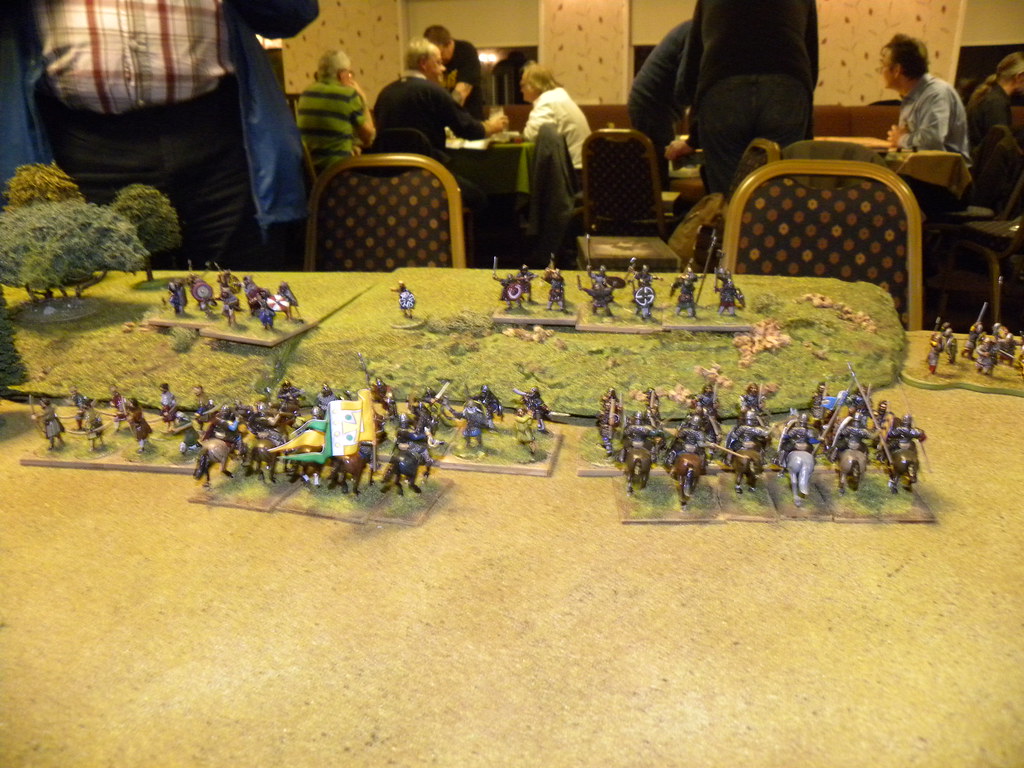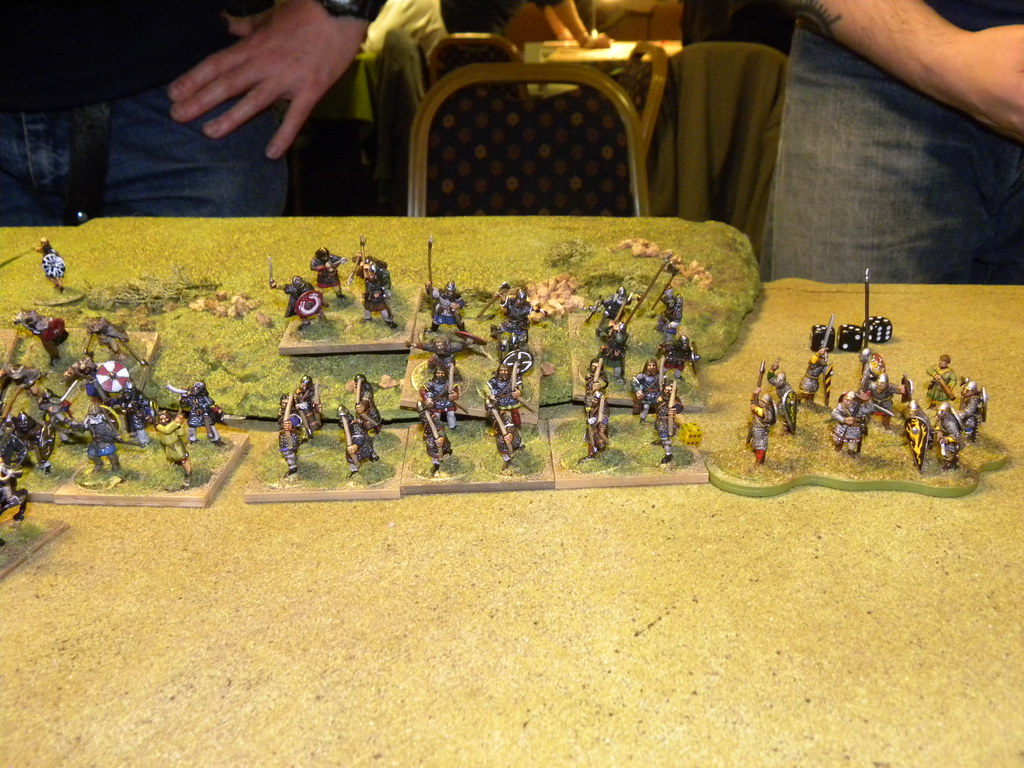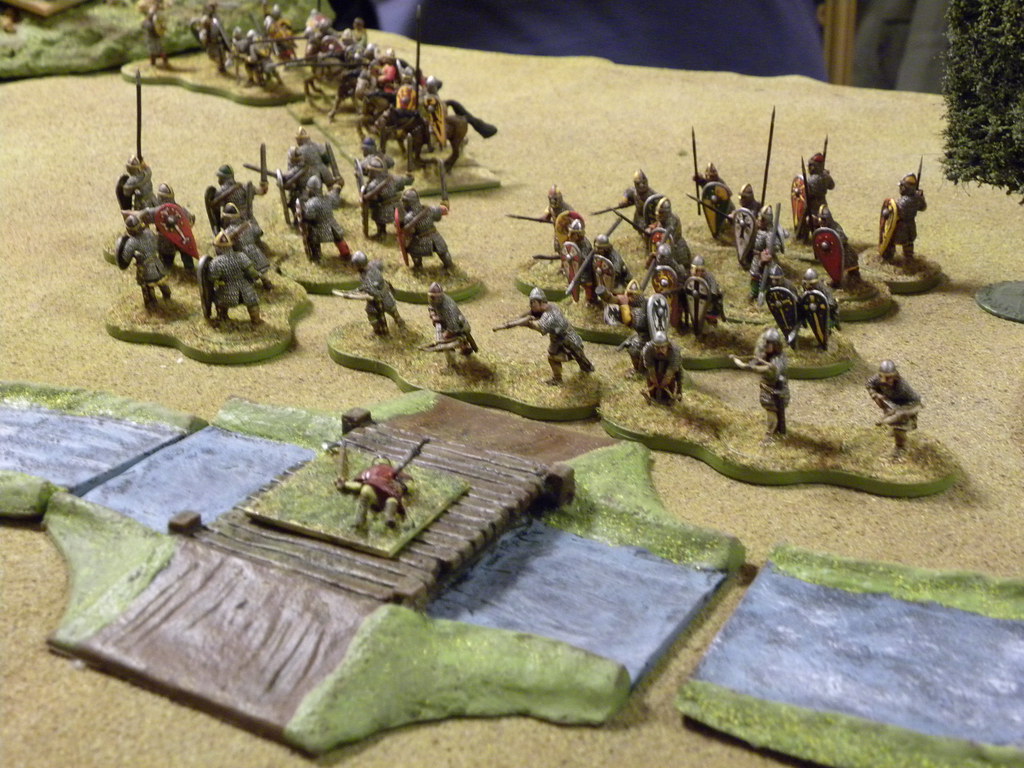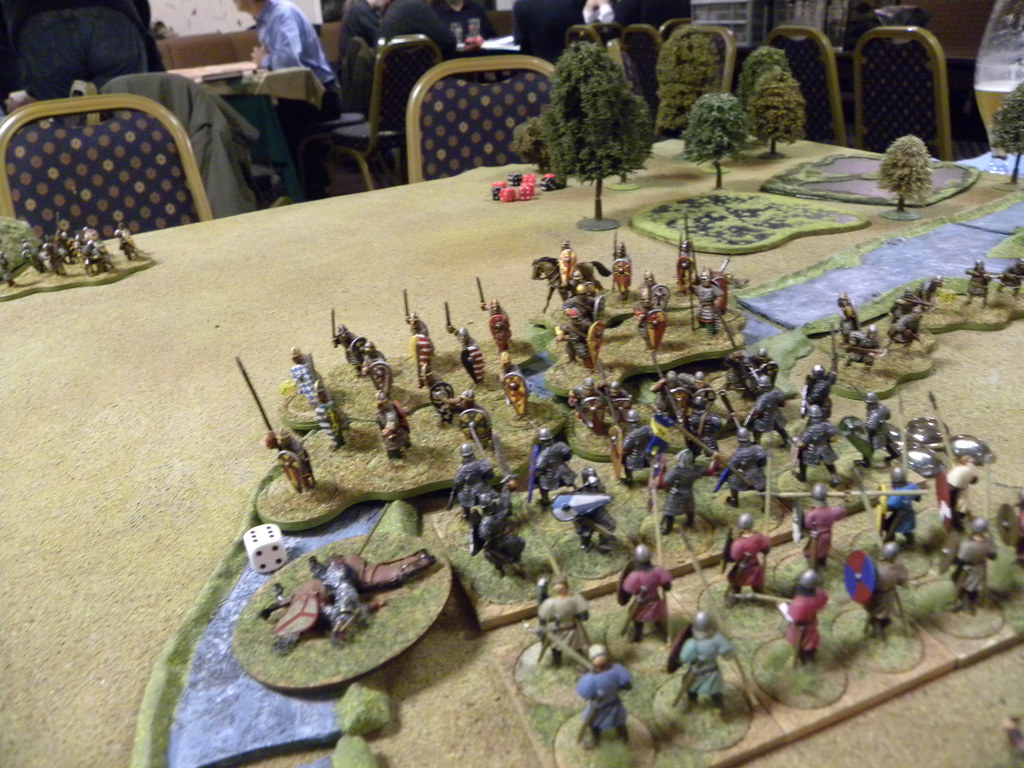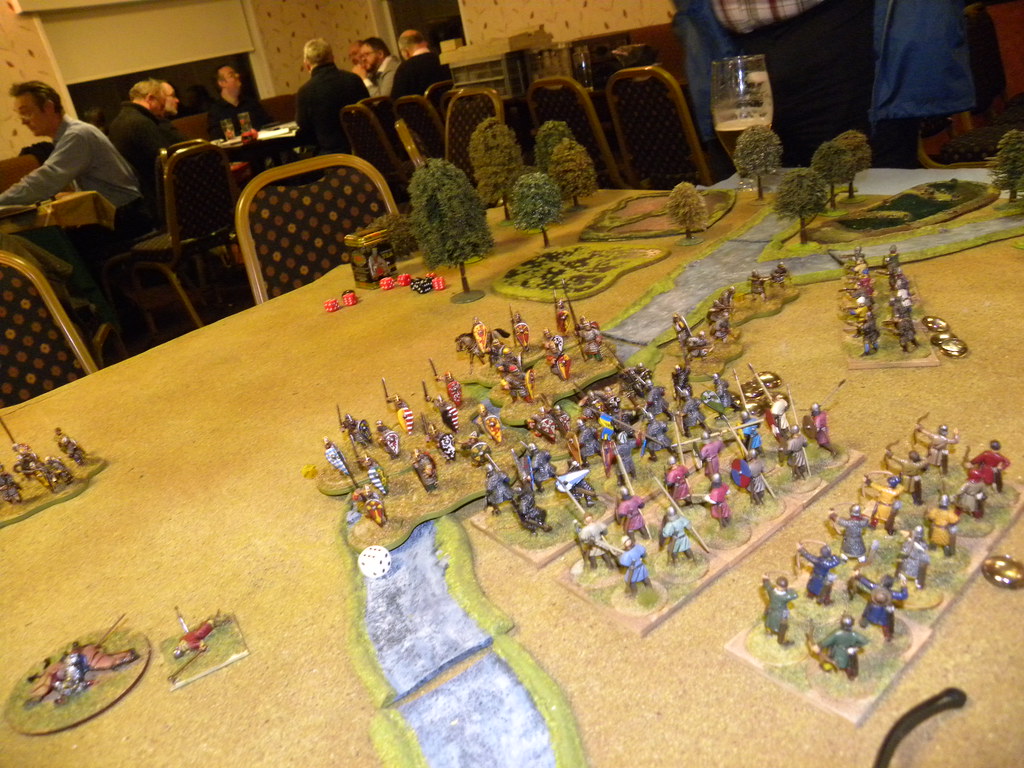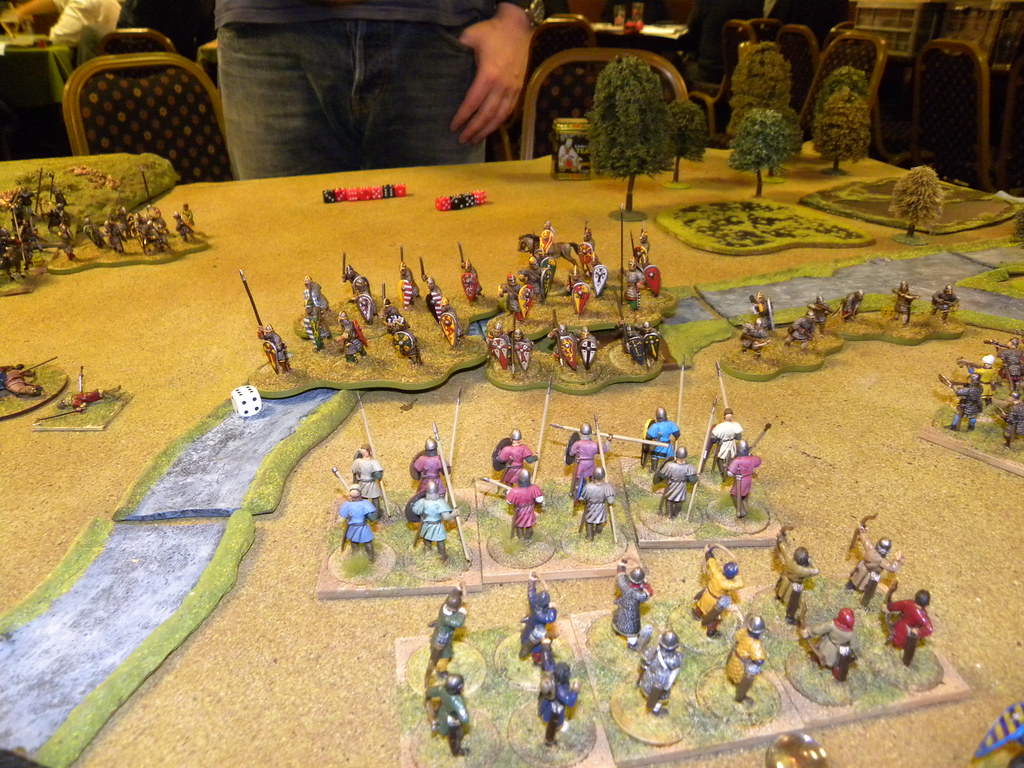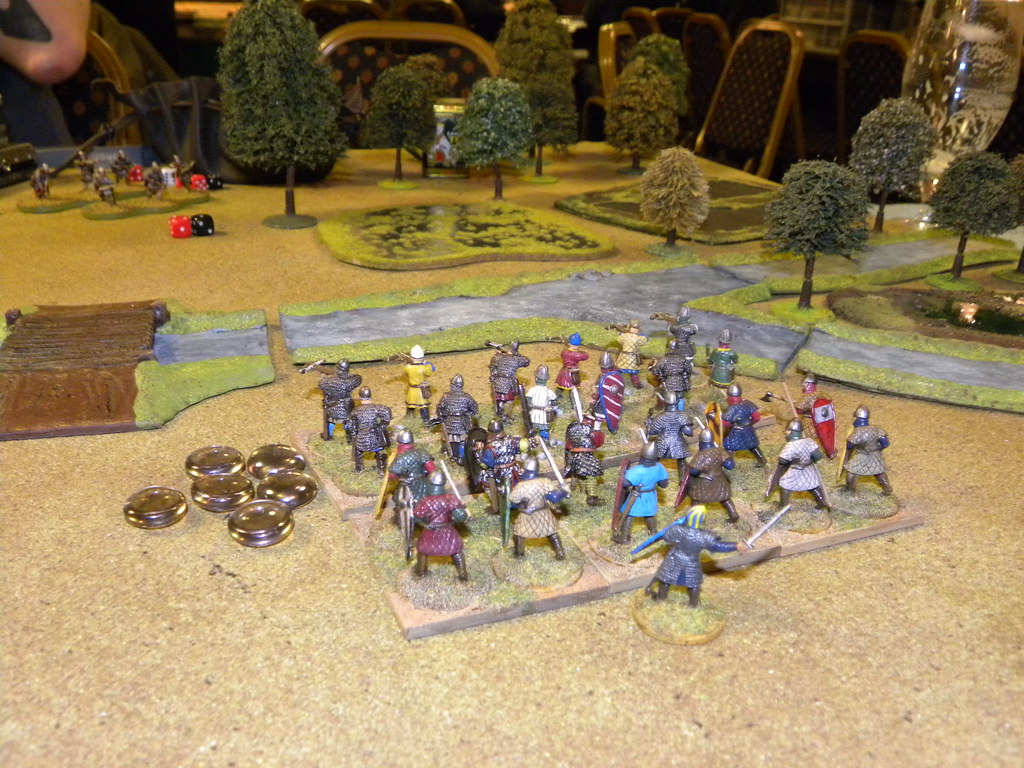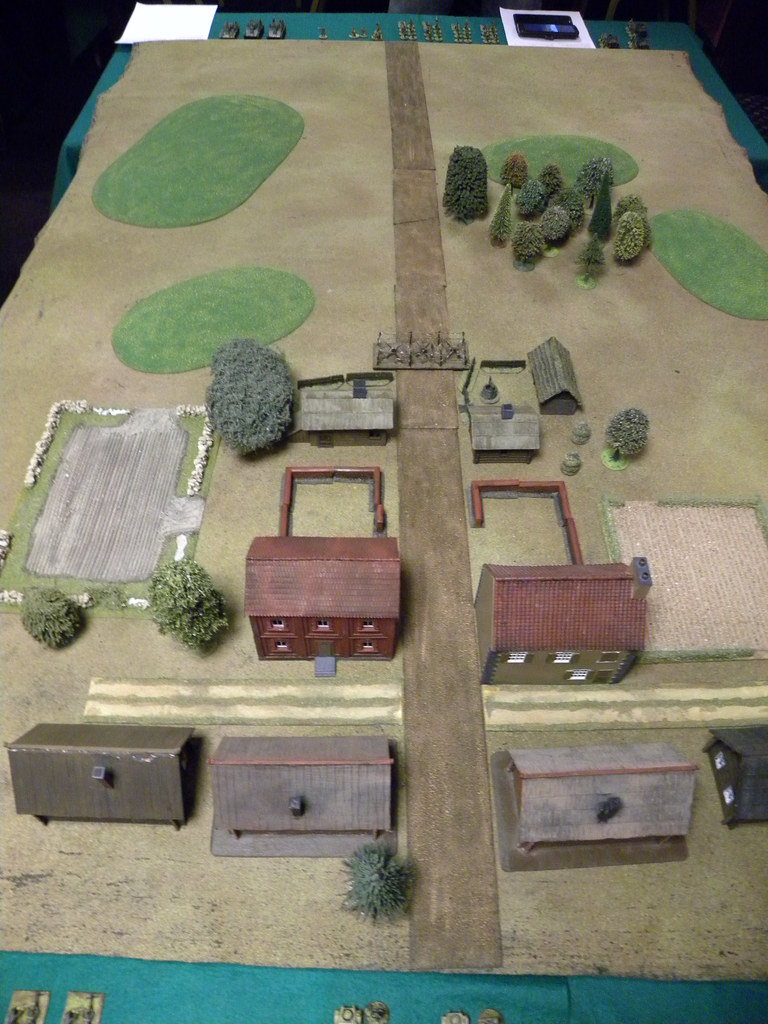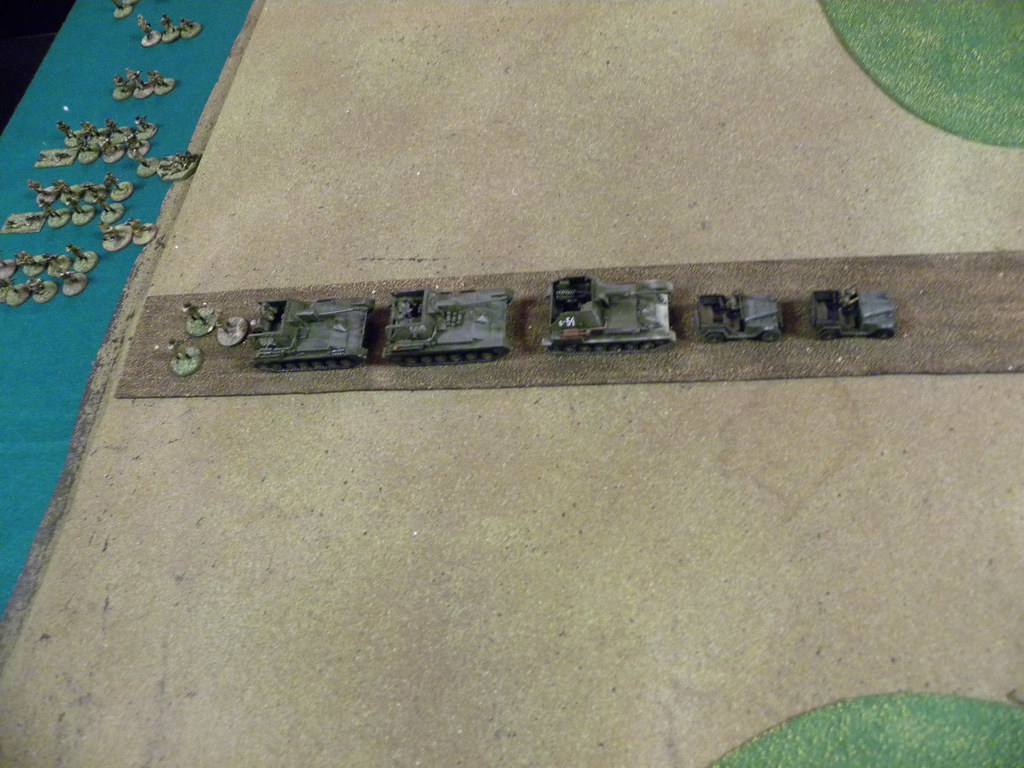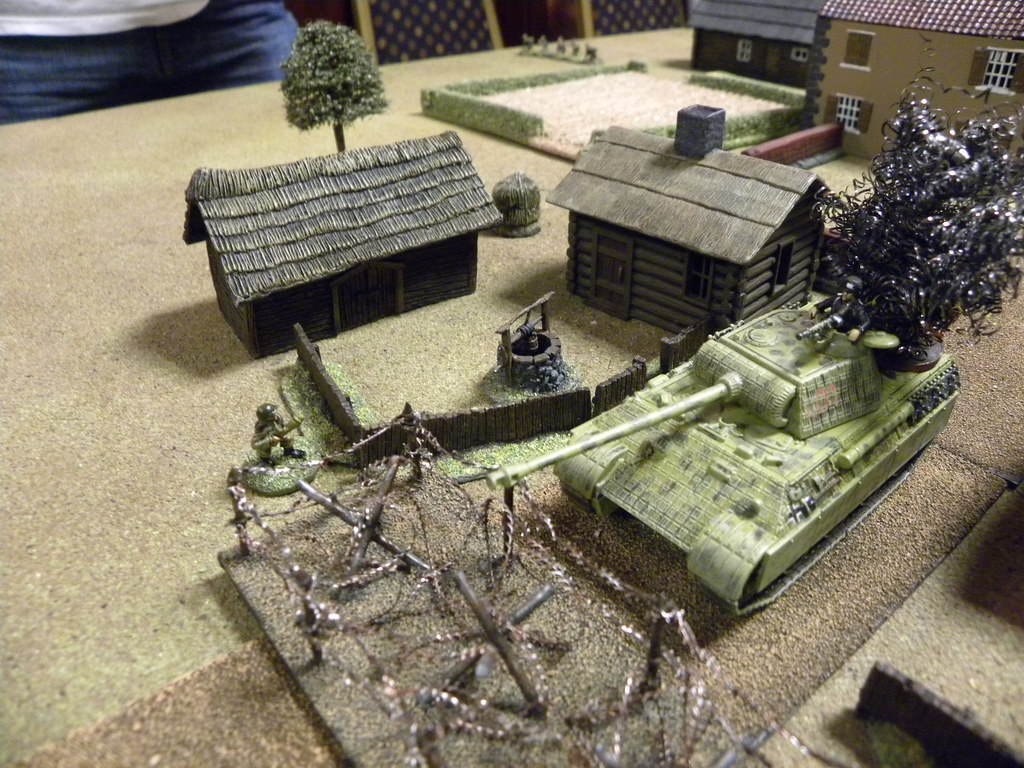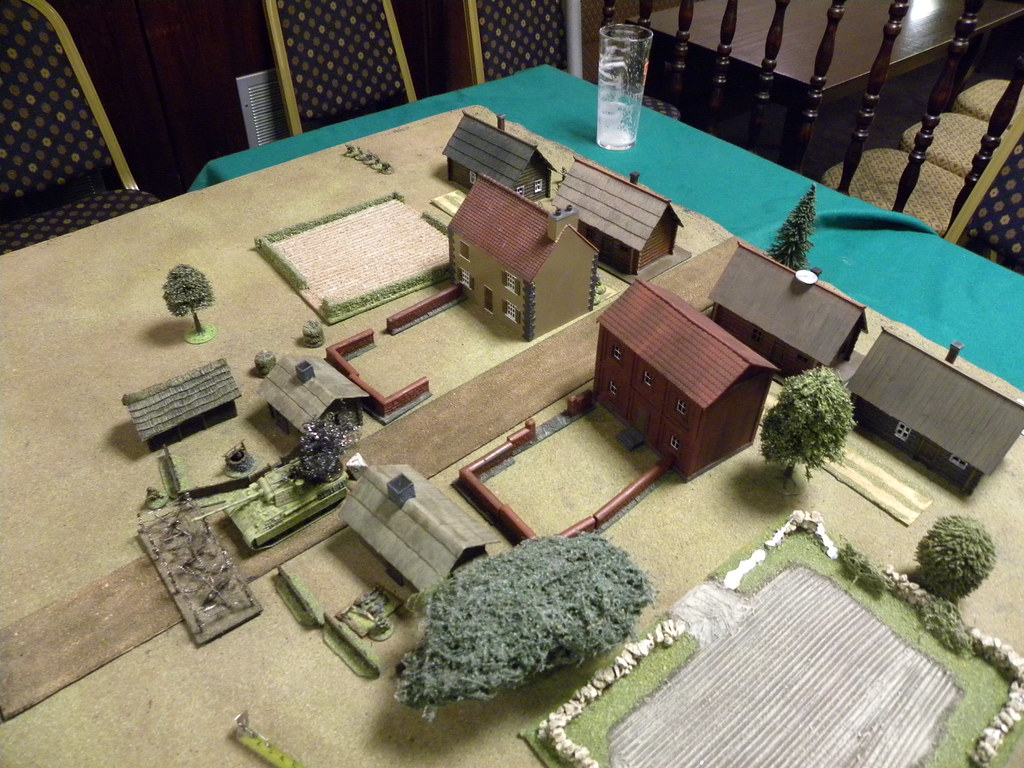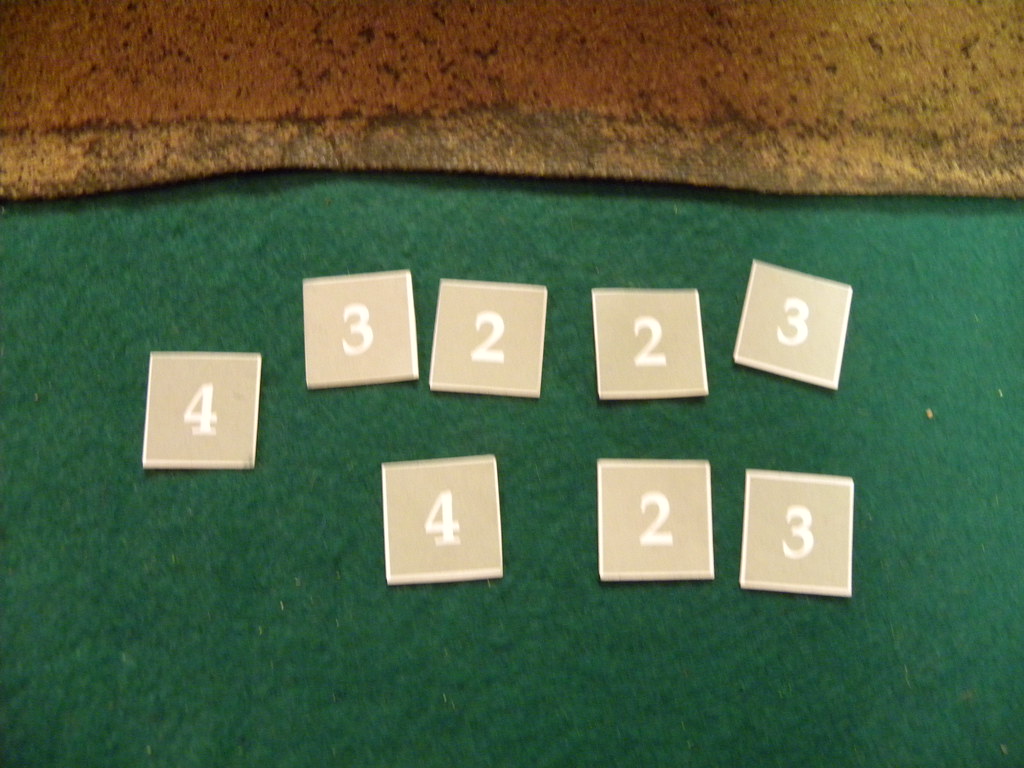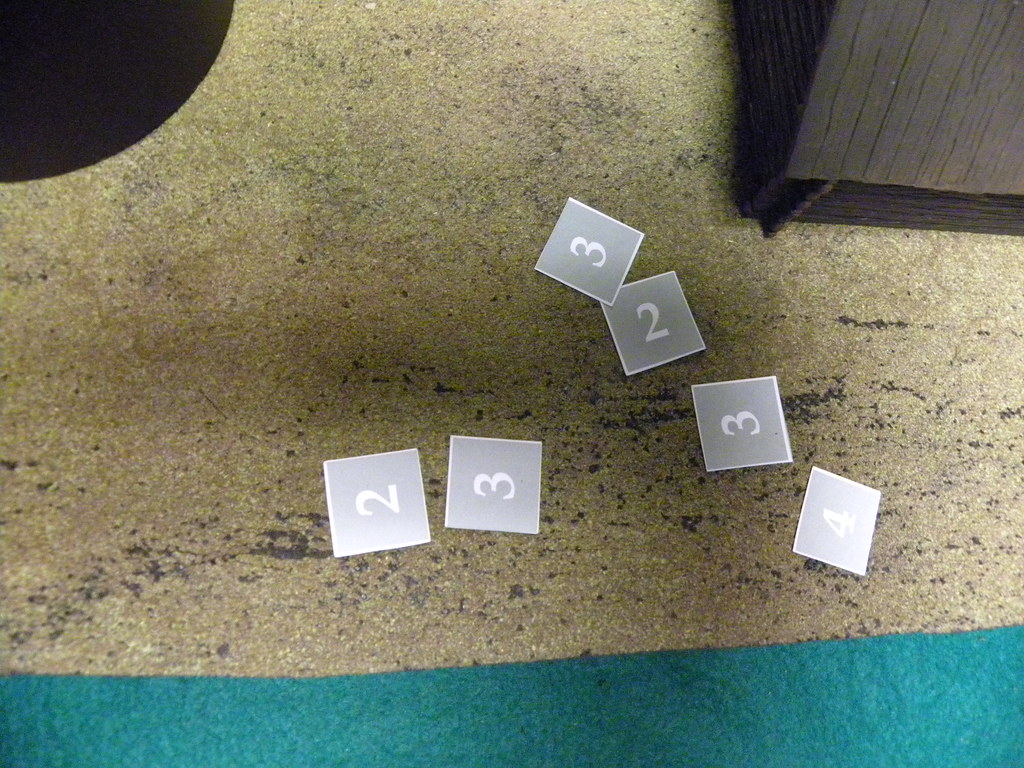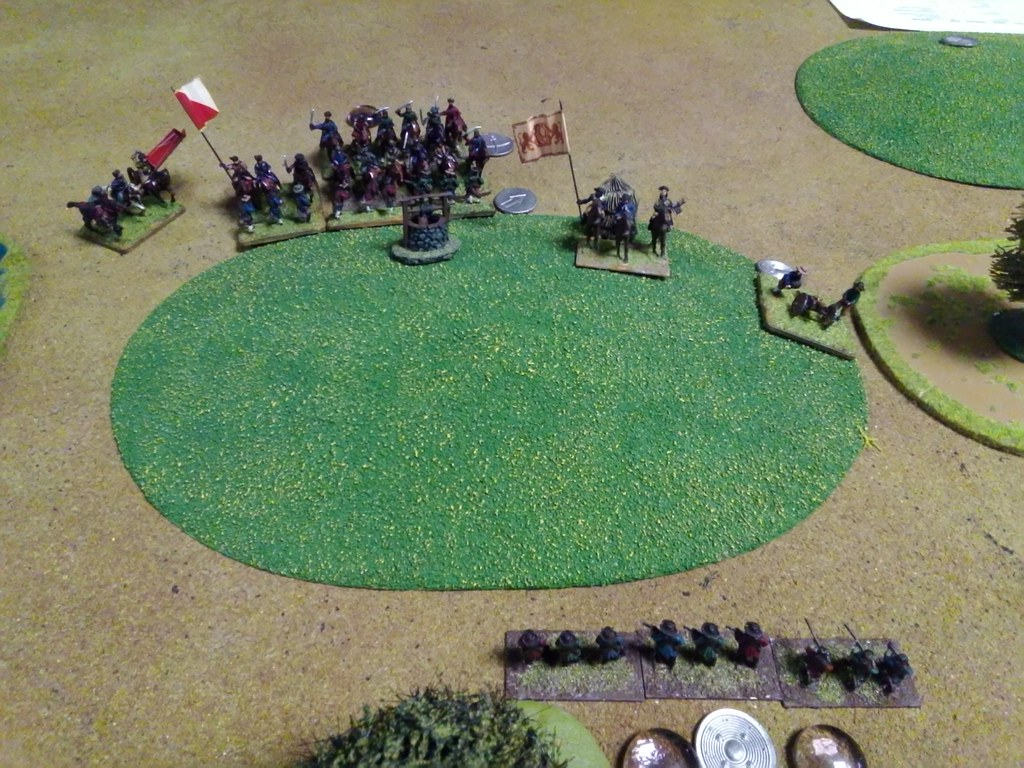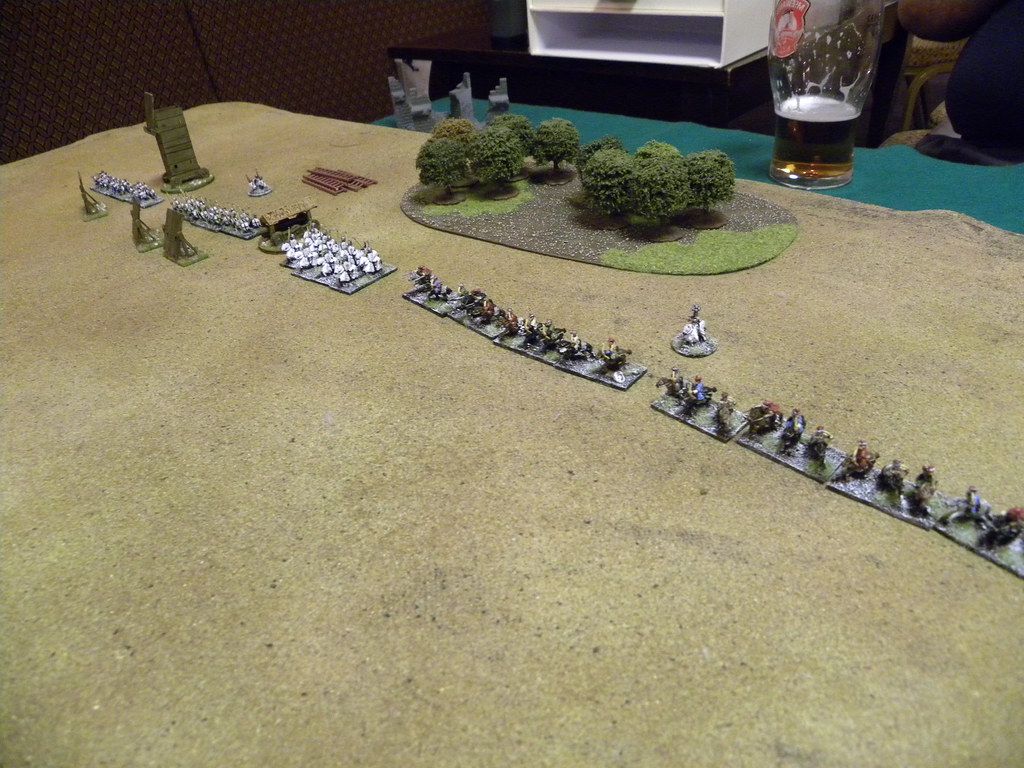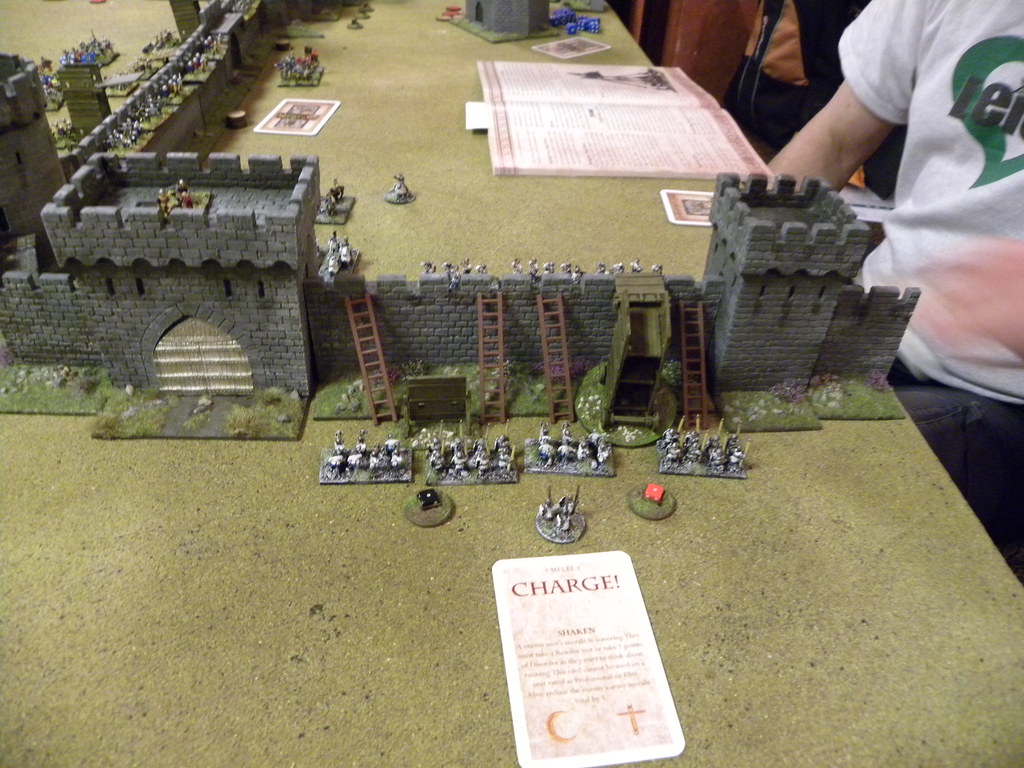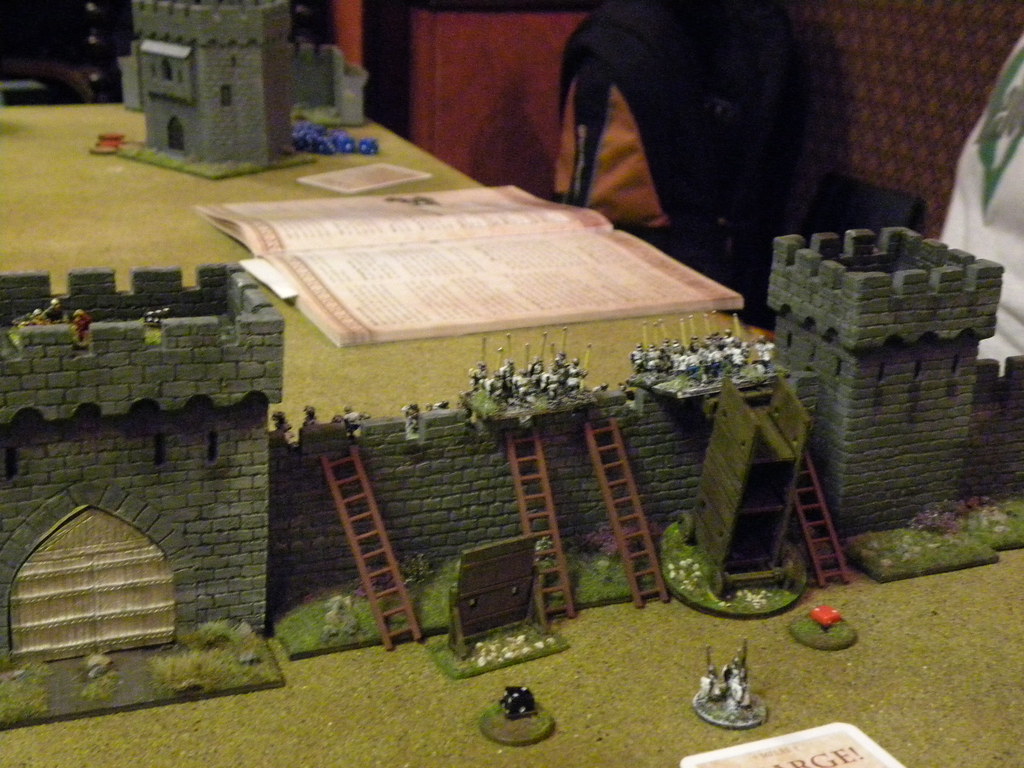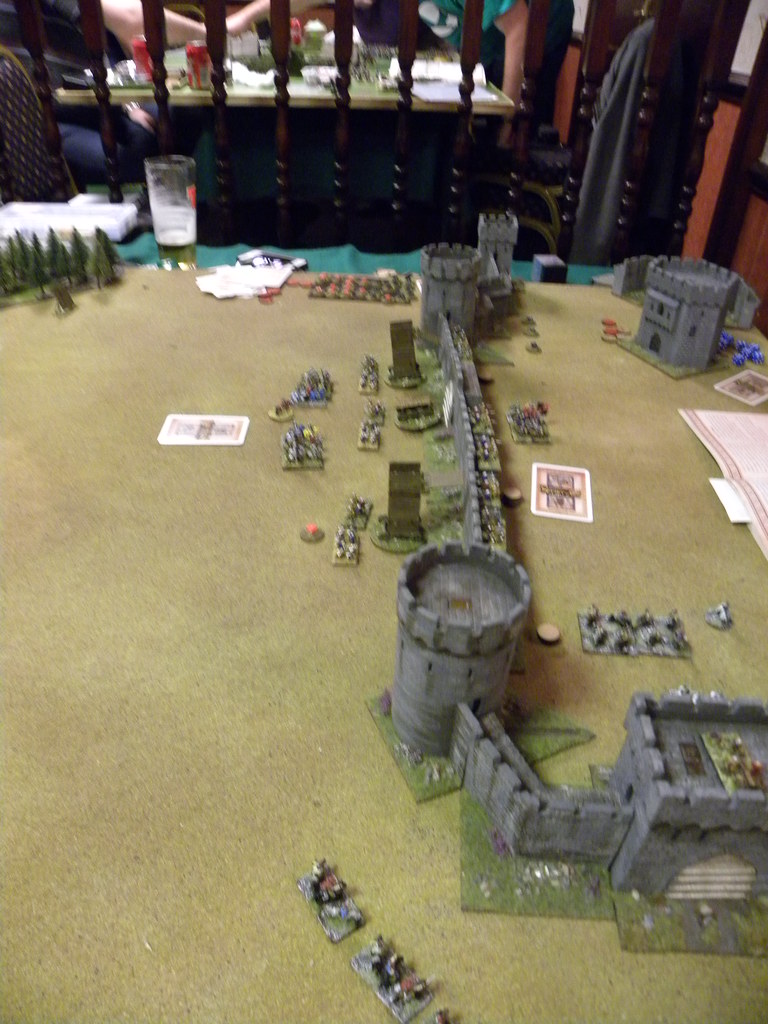With this post I would like to start the new threat on my blog: reviews of the rules. Today the first one: Over the Hills.
Z tym postem, chciałbym zacząć nowy wątek na moim blogu: recenzje zasad. Dzisiaj pierwsza z nich: Over the Hills.
I just finished reading the rules. After the first game my opinion about the game was not enthusiastic as the game was sometimes a chaos. Now I read them and finally can said a little more about this. The rules are divided into three parts: the basic rules, an optional rules and appendices. So let start from the beginning.
Właśnie skończyłem czytać zasady. Po pierwszej grze moja opinia na ich temat, nie była zbyt entuzjastyczna, a to dla tego, że gra czasami była zbyt chaotyczna. Teraz po przeczytaniu mogę w końcu coś więcej o nich powiedzieć. Zasady są podzielone na trzy części: zasady podstawowe, zasady opcjonalne i dodatki. Zacznijmy więc od początku.
The Over the Hills rules are writen by Adrian McWalter and Quinton Dalton and published by Partizan Press in 2016.
Zasady Over the Hills zostały napisane przez Adriana McWaltera i Quintona Daltona i opublikowane przez Partizan Press w 2016 roku.
1. Basic rules. Zasady podstawowe.
The very interesting is an engine of the rules. It uses the single D10, so everyone who used to use a bucket of dice can be surprised. The game divided sides on side A and side B and depending on side it executes different orders during the turn. The turn started with A moving and then rally their forces and then B is able to fires defensive fire and so on. This is put in a very logical order. I really like that part, it gives something new to the rules not only A does all actions and then B does their actions.
Bardzo interesujący jest silnik gry. Używa pojedynczych kości K10, węc wszyscy przyzwyczajenie do używania wiader z kostkami, moga poczuć się zaskoczonymi. Gra jest podzielona na dwie strony: A i B i w zalezności od tego w trakcie tury wykonuje różne rozkazy. Tura zaczyna się od ruchu strony A, następnie przechodzi do porządkowana jednostek strony B i wtedy dochodzi do ognia obronnego strony B i tak dalej. Wszystko to jest ustawione w bardzo logiczną całość. Naprawdę ta część bardzo mi się podoba, ponieważ jest to coś nowego i nnego od strona A wykonuje wszystkie swoje akcje a nastepnie strona B.
Every unit has it starting Fatigue Score. It is the number of the fatigues the unt can score, before it become destroyed. Unit can receive fatigues as the effect of firing, melee, forced movement, lost of the friendly units etc. So it is more the morale level of the unit, than unit's casualties. The number of fatigues define an unit's abillity for shooting and also for executing the orders etc., so it is very important to keep that level very low. So the very important in the game are the commanders, who can rally, inspire and lead the units. We have three levels of the commanders: Brigade, Divisional and Army. Depends of the level they are able to inflict the units. So this part is done very well too.
Każdy oddział ma swoją startową wartość fatyg. Jest to liczba, która określa ilość fatyg, jakie oddział może ponieść w trakcie gry zanim zostanie zniszczony. Fatygę można otrzymać w wyniku ostrzału, walki wręcz, forsownego marszu, utraty sprzymieżonych jednostek itp. Jest więc bardziej poziom morale, niż liczba strat zadanych naszemu oddziałowi. Liczba fatyg określa tez zdolność do prowadzenia ostrzału naszej jednostki, wykonywania rozkazów itp., ważne jest więc utrzymywanie tego poziomu na niskim poziomie. Bardzo ważni są więc dowódcy, którzy mogą porządkować, inspirować i prowadzić oddziały. Mamy trzy poziomy dowódców: brygady, dywizji i armii. W zależności od ich poziomu są oni w stanie wpływać na nasze jednostki. Ta część jest również bardzo dobrze zrobiona.
Units shoots with a roll against their present fatigue score. So for example the units fatigue starting score is 8 and it has already 2 fatigues it is rolling against 6 etc. It need to score below or equal that number to inflict fatigue. In the same way works the melee. We only roll one dice. The only issue I have it is the arc of fire, which is only in front of the unit against usually 45°.
Oddziały strzelają przez rzut przeciw ich obecnej wartości fatygi. Na przykład jeśli wartość startowa oddziału wynosiła 8 i w chwili obecnej oddział miał 2 fatygi to rzuca przeciw 6 itd. Musi wyrzucić poniżej lub równo tej wartości by zadać fatygę. W ten sam sposób odbywa się walka wręcz. Rzucamy tylko jedna kością. Jedynym moja wątpliwością tu jest kąt ostrzału, który tu jednostka ma tylko do przodu, a nie jak zazwyczaj 45°.
The game recognise the four types of units: infantry, cavalry, artillery and commanders. Every units depend of its type and formations can move a number of movement segments. For example for infantry one movement segment is 6'' and for cavalry 12''. We also can change our unit formation and it has it cost in movement segments too.
Gra rozróżnia cztery typy jednostek: piechotę, kawalerię, artylerię i dowódców. Kazdy oddział w zależności od swojego typu i formacji może wykonać określonę liczbę segmentów ruchu. Na przykład dla piechoty jeden segment ruchu wynosi 6 cali a dla kawalerii 12 cali. Za zmiany formacji równiez płacimy segmentami ruchu.
The basic rules can be played to the most of the conflicts of the black powder era (18th and 19th century), even if the authors states that not. The things, that put the rules into Napoleonic period only are the optional rules.
Zasady podstawowe moga być wykorzystane do kazdego konfliktu z ery czarnego prochu (XVIII i XIX wiek), nawet jeśli autorzy temu przeczą. Rzeczą, która powoduje, że zasady nabierają napoleońskiego kolorytu są zasady opcjonalne.
2. The optional rules. Zasady opcjonalne.
That is the Napoleonic taste, that Angus was talking about. Now we can divide our armies into two systems: the French and the Prussian. It will affect our maneuvering of our units, shooting abilities and command. Also it brings few more factors, like weather, which could affect our units. I don't want to write to much about it, as do not show the ideas of the authors. But with that rules the game became much more interesting.
To jest ten napoleoński smaczek, o którym wspominał Angus. Teraz nasze arme podzielone sa na dwa systemy: francuski i pruski. To wpływa na manewry naszych oddziałów, zdolności strzeleckie i dowódców. Również przynosi kilka nowych czynników, takich jak np. pogoda, która wpływa na nasze oddziały. Nie chcę tu pisac o tych pomysłach zbyt dużo, aby nie odkrywać za nadto pomysłów autorów. Jednak z tymi zasadami gra staje się naprawde interesująca.
3. Appendices. Dodatki.
There is several appendices, which are: the game creator, characteristics of the main players during the Napoleonic wars, the army creator, historical formations and deployments for the main players, scale calculator as the game is design for 28mm and how to convert it for different scales, a War of 1812 in America appendix and finally the all armies statistics. All appendices are very helpful, except the army statistics. The main armies are done very well, but the smallest players are not done very well. For example Duchy of Warsaw can use the Cuirassiers during the 3rd and 4th coalition, when the only unit of Polish cuirassiers (14th Regiment of Cavalry) was formed in 1809! There is more of that, especially the fatigue levels of few units should be recalculated.
W zasadach znajdziemy kilka dodatków, są to: kreator pola bitwy, charakterystyki armii głównych graczy w wojnach napoleońskich, kreator armii, historyczne formacje głównych graczy, kalkulator zamiany skal (gra jest zaprojektowana dla skali 28mm), dodatek do wojny 1812 roku toczonej w Ameryce i ostatni statystyki wszystkich armii. Wszystkie dodatki są bardzo pomocne dla graczy, poza statystykami armii. O ile główne armie są zrobione bardzo dobrze, to jest już gorzej z mniejszymi armiami. Na przykład Księstwo Warszawskie może używac kirasjerów podczas trzeciej i czwartej koalicji, gdzie jedyny oddział polskich kirasjerów (14. pułk jazdy) został sformowany w 1809 roku! Jest tego więcej, szczególnie wartości startowe fatyg w kilku przypadkach powinny być ponownie skalkulowane.
4. Summary. Podsumowanie.
The Over the Hills rules came as the competitive rules for the Black Powder and possible will not overtake the leading position, but a very interesting step into Napoleonic wargaming. Overal I really like the rules and I think that I will change my prime selection for that period. However, few thing need to be changed like the arc of fire, the small army statistics and some other minor things. Some of the ideas of authors should be highlighted: the turn sequence and the units morale with the fatigue system. Those two are the strongest points of the rules. In score of 1 to 10 (when 10 is the absolutely brilliant) I gave them strong 8.
Over the Hills są naturalną konkurencją dla Black Powder i prawdopodobnie nie zdetronizuja nich i ich wiodącej pozycji, jednak są interesującym krokiem w wargamingu napoleońskim.Ogólnie bardzo mi się zasady spodobały i myślę, że staną się one moimi podstawowymi zasadami do tego okresu. Jednak kilka rzeczy musi zostać zmienione, jak kąt ostrzału, statystyki pomniejszych armii i jeszcze kilka innych mniejszych rzeczy. Niektóre pomysły autorów powinny zostac wyróżnione: sekwencja tury i morale jednostek z systemem fatyg. To są najsilniejsze strony zasad. W skali od 1 do 10 (gdzie 10 oznacza asolutnie wspaniałe) daje tym zasadom silne 8.
















